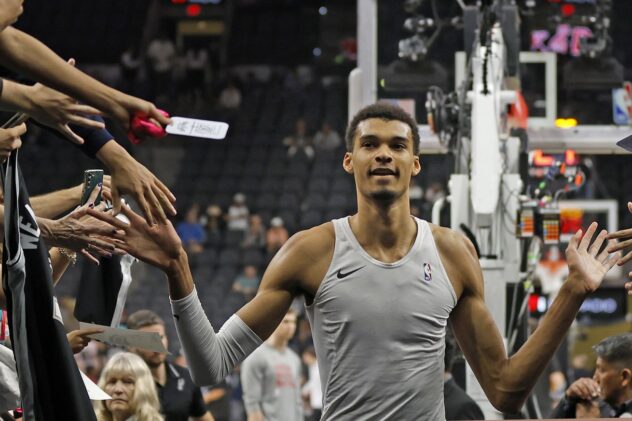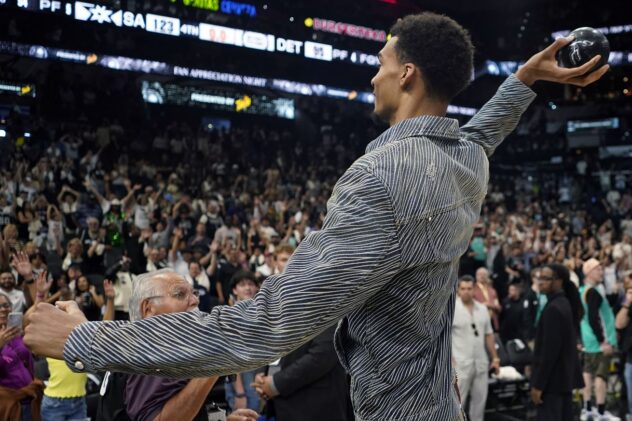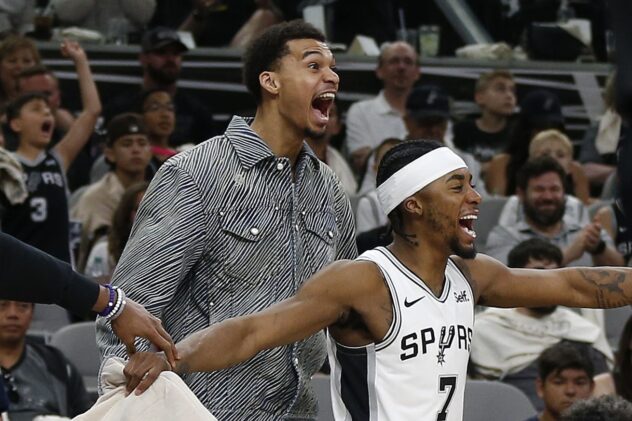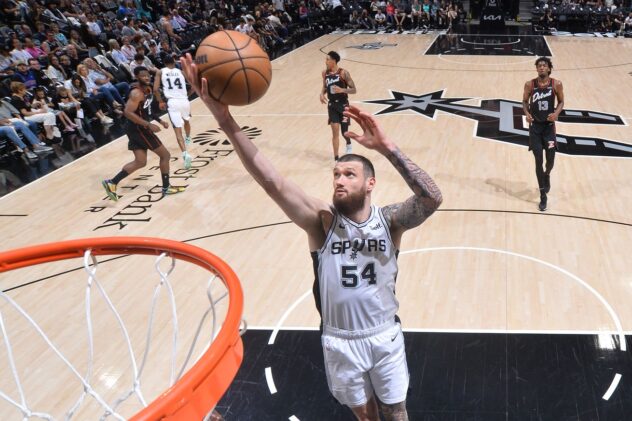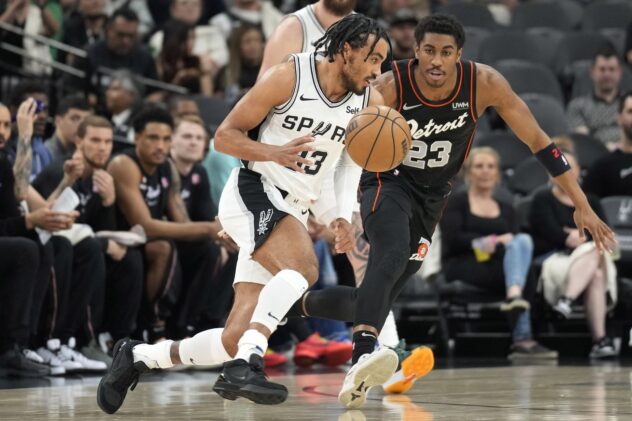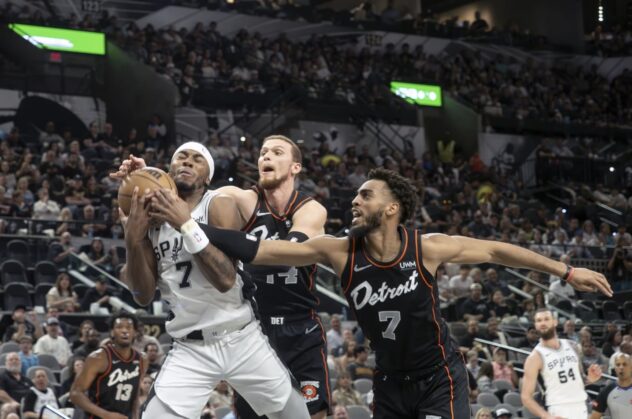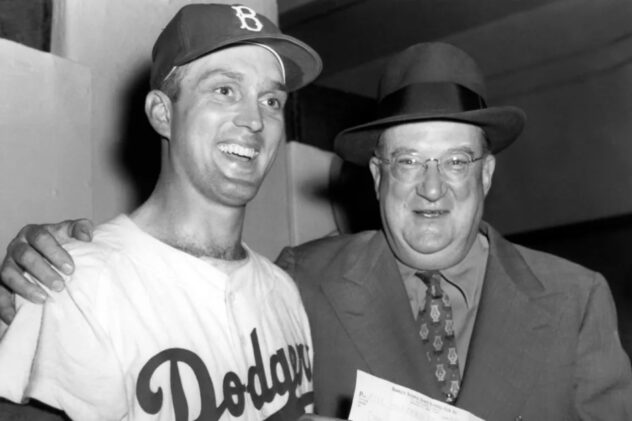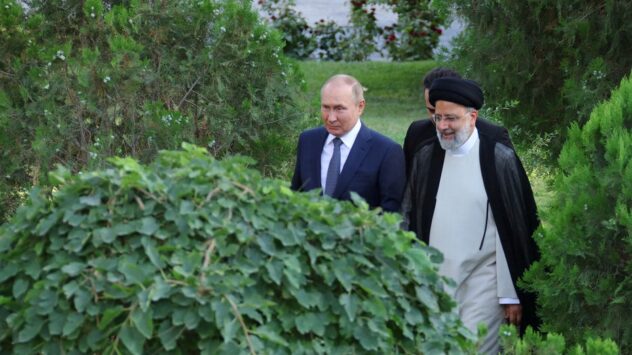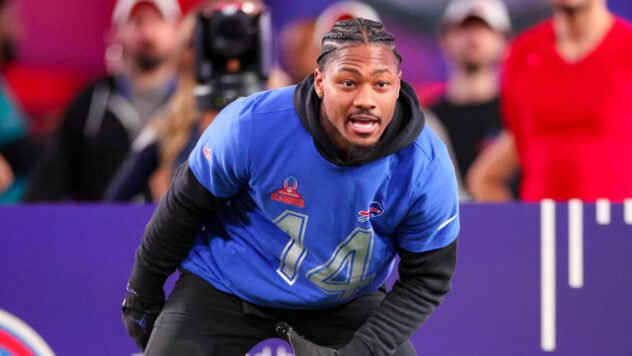2018-2019 Spurs player reviews: Davis Bertans
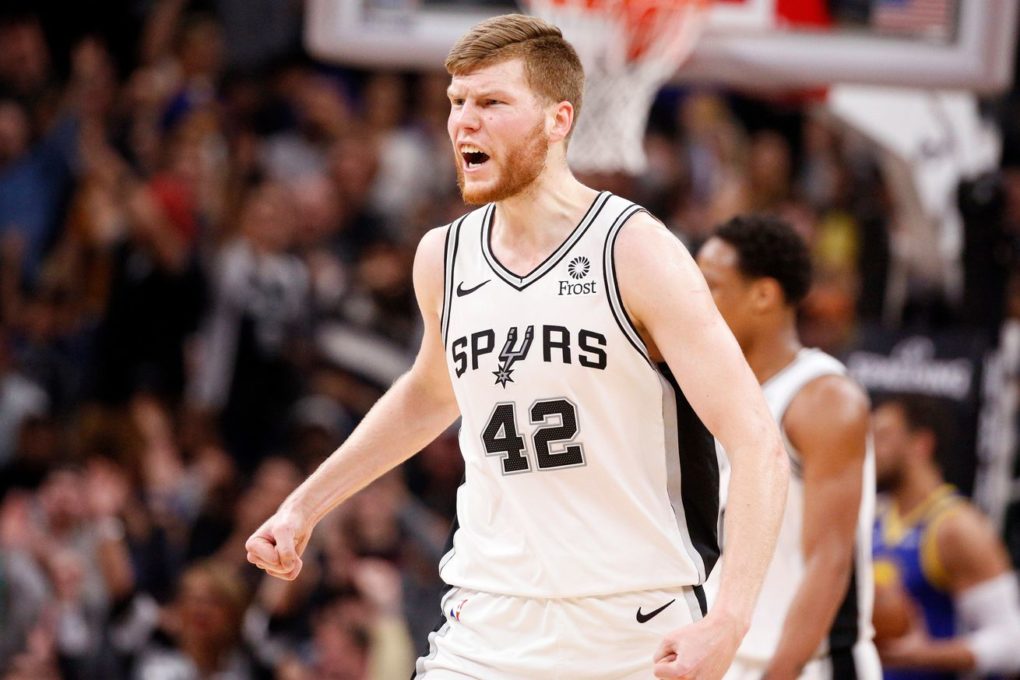
Bertans’ strong season fell off a cliff, ultimately leading to two DNPs to close out the playoffs.
Welcome to the 2018-19 season player reviews, where we will be rehashing the performance of 13 San Antonio Spurs from this season (excluding Dejounte Murray, Pau Gasol, Donatas Motiejunas, and two-way players Drew Eubanks and Ben Moore) and looking towards the future. If you’ve missed any, you can click here to catch up.
Roger Ebert once talked about how every movie he rated was independent of all the others. He didn’t believe that two movies receiving the same star rating were always of the same quality. Instead, he believed that both movies were equal in achieving their respective goals and expectations. These reviews will take the same approach when providing grades, so two players receiving the same grade does not necessarily mean they had the same impact on the team.
Personal
Birthday: November 12th, 1992 (26 years old)
Height: 6’10”
Position: Forward
Contract details: $7,000,000 in 2019-2020, Unrestricted Free Agent in 2020-2021
Introduction
I must preface this article by saying I have always been part of the #FreeBertans movement. Maybe I want Davis Bertans to be something he’s not, but I have gotten the sense since he first joined the Spurs that there is a lot of untapped potential in his game. He’s obviously a fearless shooter, but he also has some semblance of a handle, is a willing passer, and has sneaky athleticism.
I feel like Pop is always looking for a reason to not play Bertans. There was a point in time towards the middle of the season where Dante Cunningham was averaging more minutes per game than Bertans. Yes, it’s true that Cunningham split his time between the small and power forward positions whereas Bertans has played almost exclusively at power forward. Still, it made me feel gross inside.
Bertans has a confidence about him that I love. He is able to spread the floor better than anybody in the NBA outside of a few elite guards. I sometimes wish he would step in a little closer to the three point line, but his ability to knock down shots from a few feet beyond the arc helps generate more space in the middle for DeMar DeRozan, Derrick White, and the other ball-handlers. This level of floor spacing is invaluable in today’s NBA, making Bertans an important piece of the puzzle even when his shots are not falling. I believe this fact was shown in his high net rating, even in those times when he lost some of his efficiency down the stretch. The threat of the shot can sometimes be just as dangerous as the shot itself.
Review
It goes without saying that the Spurs had a surplus of spot up shooters this season. Out of the 80 NBA players with at least 200 spot up possessions, they had four inside the top 17 in terms of Points Per Possession (PPP): Patty Mills, Bryn Forbes, Rudy Gay, and Bertans.
Bertans was 11th on the list with a PPP of 1.206. Over 55 percent of his overall shots came from spot up possessions, which was the highest percentage out of these 80 players. His role on the offensive side of the court typically fell under one of two categories: shoot immediately upon receiving the ball, or pass immediately upon receiving the ball. His average seconds per touch was 1.56 and average dribbles per touch was 0.49, both of which were the second lowest on the Spurs behind Jakob Poeltl. His quick decision making with the ball helped with the bench unit’s motion offense. Still, I would have liked to see him take his opponents off the dribble more often, especially later in the season when defenses were forced to respect his outside shot.
The problem is Bertans is not yet comfortable in his decision making during driving situations. Too often he would fake a shot and dribble into the paint only to kick out without purpose. This would force the Spurs to reset their offense, oftentimes late in the shot clock. In the 98 possessions Bertans drove to the rim, 36 resulted in field goal attempts. He shot only 38.9 percent on these shots, the second worst percentage on the team behind Cunningham. He passed the ball in 50 of these possessions, but only 10 resulted in assists. His 5-1 ratio of pass possessions to assists was the worst ratio on the Spurs. Finally, he turned the ball over on 7.1 of his drive possessions. That was the third highest turnover rate on the team behind Cunningham and LaMarcus Aldridge. Bertans must improve his ability to drive to the rim to make defenses pay for playing him too tightly on the perimeter. Otherwise, we’ll see him continue to struggle against teams with good wing defenders or in the playoffs when teams have time to game plan.
Bertans has played 93% of his possessions with the Spurs as a power forward. He is a prototypical stretch four in the modern NBA; however his rebounding numbers are lower than you’d like to see from your power forward. Some of the reasoning behind his extremely low offensive rebound numbers has to do with the fact that he spends the majority of his time on the perimeter.
Bertans also doesn’t do a good job rebounding the ball in traffic. His contested rebound percentage of 24.6 was the lowest percentage out of all Spurs players who played the power forward or center positions this season, although it’s not as bleak as it seems. He had a total of 451 rebound chances this season. According to the NBA, a rebound chance is defined as the following:
A player has a rebound chance if they are the closest player to the ball at any point in time between when the ball has crossed below the rim to when it is fully rebounded.
Bertans converted on a strong 58.5 percent of his rebound chances this season. He also deferred on 37 rebound opportunities. When combining the rebound chance percentage along with deferred rebounds, his adjusted rebound chance percentage was 63.8 percent, which was the second highest percentage on the team behind Gay out of all players who were part of the regular rotation this season. Last season his adjusted rebound chance percentage was only 53.5 percent, so he has shown vast improvement in that area over the past year.
Looking Forward
Bertans has one more year on his contract. There have been rumblings that the Spurs would not be opposed to trading Bertans if the price was right, although to be fair, the same could probably be said for almost every player on the roster. I think the Spurs’ roster does need a bit more balance, so it’ll be interesting to see how that is handled in the offseason.
Assuming Bertans stays with the team this season, he needs to improve on his decision making when he’s run off the three point line. He makes quick, smart decisions with the ball before dribbling, now he needs to learn to see the floor and act in the same manner when dribbling.
Other than that, we just need to see the confident Bertans back in action. Pop used to joke that Bertans never saw a shot he didn’t like, but for whatever reason his production dropped after the All-Star break, and the Denver Nuggets appeared to have completely ripped away his confidence in the playoffs. For the first time I saw a tentative Bertans out there. He was passing up open looks, causing the offense to stall at times. To earn the bigger role he seeks next season, especially in the playoffs, he can’t afford to lose confidence at any time.
Top Performance
I chose the game on January 27, 2019 in a win against the admittedly poor defense of the Washington Wizards. Still, he was a huge part of the Spurs’ win, scoring 21 points on 8-11 shooting. He also added three rebounds and a couple assists. What I loved about this game is that we saw peak aggressive Bertans. He aggressively shot over defenders, and when the opposition ran him off the line, he drove with purpose. At this point in the season, Bertans led the NBA in three point percentage at 49 percent. Unfortunately, his numbers would slowly begin to drop from this point on, “only” finishing the season at 43 percent.
Final Grade: B-
This grade was pretty simple for me to assemble. Going into the final week of February, Bertans was averaging 8.4 points in 21 minutes on 48.4/48.1/88.1 percent shooting. He had the highest Real Plus Minus out of all players on the team. He had the highest net rating on the team by a large margin, and pretty much every other advanced metric loved him. He was no doubt heading towards an A+ (or higher) grade.
For the final six weeks of the season, those numbers dropped to 6.8 points in 21 minutes on 37/31/89 percent shooting. Offense aside, his Defensive Real Plus Minus dropped by at least a fully point during this span. With Bertans struggling on both sides of the ball, it was becoming concerning heading into the playoffs.
Unfortunately for Bertans and the Spurs, his struggles continued into the playoffs. Through the first five games of the playoffs Bertans averaged only 3.2 points in 16 minutes on 33.3/27.6/60 percent shooting. He was also getting attacked by Paul Millsap every time on the defensive side of the court. Every advanced metric outside of net rating had him as the single worst player in the Spurs’ regular rotation. This ultimately led him to being sidelined for the entirety of Games 6 and 7.
Ultimately a B- felt like the appropriate middle ground. He still finished the regular season with the highest net rating out of all the Spurs. His shooting percentages still ended up the highest in his career. He was still one of only three Spurs players who finished with positive Offensive and Defensive Real Plus Minus numbers. I would say he slightly exceeded my expectations this season, though his free fall down the stretch left me feeling a bit cold.
Up next: Rudy Gay
2018-2019 Spurs player reviews: Davis Bertans
Source: Pounding The Rock

